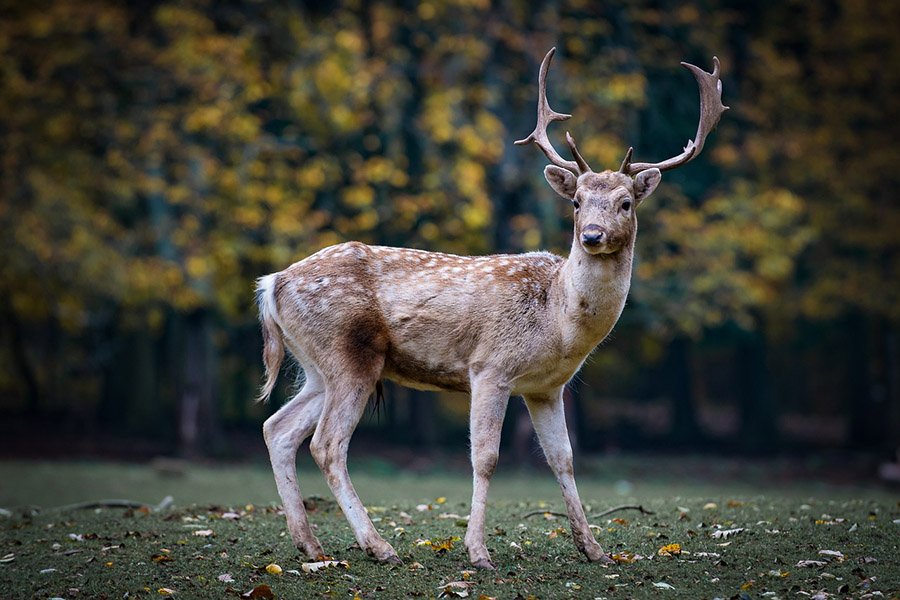When it comes to understanding the behavior of deer, one question that frequently arises is whether deer travel the same path every day. This query is not only of interest to hunters but also to wildlife enthusiasts and researchers who study animal behavior. The answer, as it turns out, is both straightforward and nuanced, depending on various factors influencing deer movement.
[lwptoc]
Deer Movement Patterns
Deer are generally creatures of habit. They tend to follow established paths that lead them to vital resources such as food, water, and shelter. These paths are often used repeatedly, especially if the routes provide safety from predators and efficient access to their needs. However, while deer do exhibit these habitual behaviors, their movement patterns are not entirely predictable and can vary based on environmental changes and threats.
In stable environments, deer might use the same paths consistently for long periods. This is particularly true in areas where food and water sources are abundant, and where there is minimal disturbance from humans or predators.

Factors That Influence Deer Path Selection
Food and Water Availability
Deer incorporate essential resources like food and water into their daily travel routines. During different seasons, they might adjust their routes to access seasonal food sources.
For example, in the spring and summer, deer prefer areas rich in protein to help them recover from winter, while in the fall, they seek out carbohydrate-rich foods to build fat reserves for the colder months. Water sources such as rivers, ponds, and streams also play a critical role in determining the paths deer follow, as they need to stay hydrated, especially during dry periods.
Shelter and Safety
Safety is paramount for deer, influencing them to choose paths that offer good cover from predators and harsh weather. Dense thickets, wooded areas, and regions with ample shrubbery are preferred as these provide shelter and a degree of seclusion. When traveling, deer often select routes that minimize exposure to threats, which is why they might favor paths through wooded areas over open fields.
Rutting Season
During the rut, or mating season, the behavior of bucks changes significantly. Bucks may travel much further distances than usual, sometimes covering several miles in search of does. This increased activity can cause bucks to deviate from their usual paths, making their movement patterns less predictable during this time.
Human Activity and Predation
Human presence and activities, such as hunting or urban development, can disrupt deer movement. Deer are highly sensitive to changes in their environment and will often alter their routes to avoid areas with increased human activity. Similarly, if a deer perceives a threat from predators, it may change its path, avoiding areas where it has previously encountered danger.

Do Deer Really Follow the Same Path Every Day?
While deer often follow the same paths, their routes can change depending on various factors. A concept known as the “Seven-Day Rule” suggests that deer might return to the same locations at the same time each year, down to the exact day or even hour, assuming that no significant changes have occurred in their environment. However, on a daily basis, while they may use familiar paths, their exact routes can vary.
In summary, deer are consistent in their movement patterns but also exhibit flexibility when necessary. They adapt to changes in their environment, which means that while they might favor certain paths, they are not strictly bound to them every day.
Observing and Predicting Deer Movement
For those interested in predicting deer movement, using tools like trail cameras and scouting can be invaluable. By observing the routes deer take over time, you can gain insights into their behavior and better predict where they might travel next. Seasonal changes, such as the availability of certain foods or shifts in weather, can also provide clues about when deer might change their paths.
Understanding these patterns is not only useful for hunters looking to position themselves strategically but also for wildlife enthusiasts and researchers studying deer behavior in various habitats.
Conclusion
Deer are creatures of habit, often following the same paths when conditions are stable. However, their movement patterns are influenced by numerous factors, including food and water availability, safety concerns, human activity, and seasonal changes. While they may not follow the exact same path every day, understanding the factors that influence their movement can provide valuable insights into their behavior.
Whether you’re tracking deer for hunting, research, or simply for the joy of observing wildlife, recognizing the balance between consistency and adaptability in deer movement is key to understanding these fascinating creatures.

